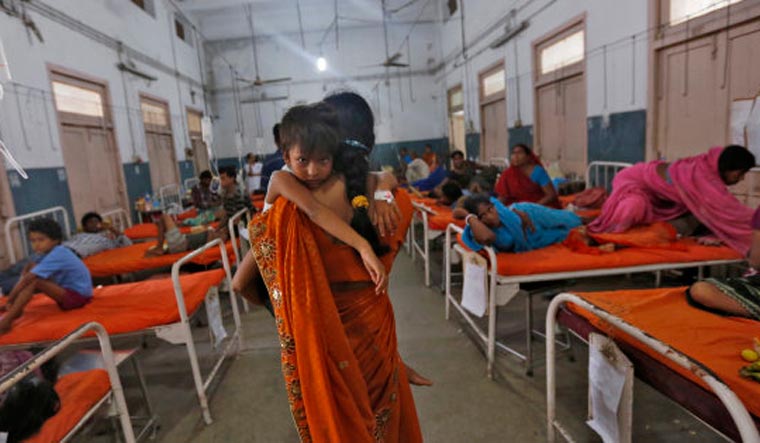A pilot project on strengthening primary health care in rural Tamil Nadu could well serve as a model for the Union government's ambitious National Health Protection Scheme, also known as Ayushman Bharat.
The Universal Health Coverage project, launched last year in three blocks in Tamil Nadu, has brought about a "dramatic fall" in the overall dependence on private hospitals.
According to a study done by IIT Madras, the project has also brought about a "fall in the out-of-pocket expenditure" among those seeking out patient care from both public and private hospitals.
The study, 'Universal Health Coverage-Pilot in Tamil Nadu: Has it delivered what was expected?' was done by the Centre for Technology and Policy, Department of Humanities and Social Sciences, IIT Madras. The results of the study have been submitted to the Department of Health and Family Welfare, Government of Tamil Nadu.
The project assumes importance in light of the the government's emphasis on Ayushman Bharat. The health scheme was announced in the budget earlier this year. Under one of the two components of the scheme, the government plans to upgrade 1.5 lakh sub-centres to "health and wellness centres" as part of its objective to provide comprehensive primary healthcare.
Last week, on Ambedkar Jayanti, the prime minister launched the first health and wellness centre in Chhattisgarh's Bjiapur district.
In the Tamil Nadu project, too, the focus was on developing primary healthcare facilities. Hence, village sub-centres that are the "closest delivery points" for the community were worked on. The infrastructure at these centres was developed, and adequate drugs and additional voluntary health nurses were provided.
As a result, percentage of those seeking outpatient care in these centres increased from one per cent to close to 23 per cent since the project was launched in early 2017.
Besides, the share of private hospitals for out-patient care dropped significantly, too. For instance, before the pilot, it stood at 51 per cent in one of three blocks, but came down to 21 per cent after the pilot was over.
Strengthening primary healthcare has been a key demand of public health experts, who have argued that such a move would help decrease the load on higher facilities such as district hospitals. By developing a sub-centre and integrating it with the primary health care centre, many diseases can be treated at the initial stages, instead of referring them to district hospitals.
Professor V.R. Muraleedharan, department of humanities and social sciences, IIT Madras said that the report provides "unambiguous evidence" in support of increased access to these sub centres. These centres have helped in diverting patient load from private hospitals and higher level of government hospitals, he said.
The study done by IIT Madras also stresses on good training programmes for the nurses, and strictly enforcing population norms per centre to avoid "excessive load" on the staff.
However, fulfilling the requirement for adequate and well-trained staff at these sub-centres is set to be one of the major impediments for the success of the Ayushman Bharat scheme.


